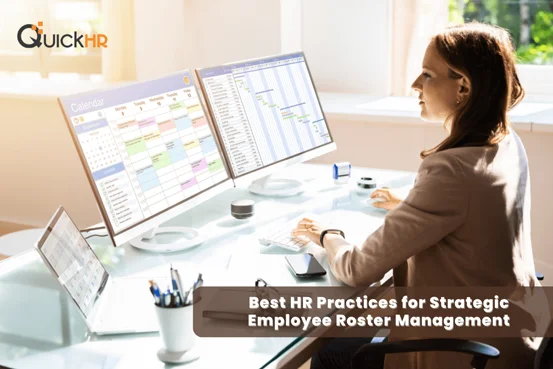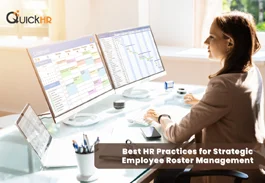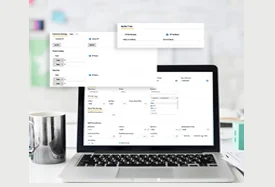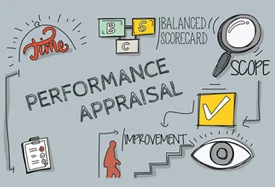
Best HR Practices for Strategic Employee Roster Management
Posted on 15 April 2024 in Business | Suki Bajaj
In today's fast-paced work environment, managing employee rosters can be tough. It's about balancing business needs with staff well-being, all while adhering to local regulations and keeping costs under control.
But fear not, HR leaders! We’re here to bring you some tips to transform your rostering from a chore to a strategic tool for staff management.
In this guide, we’ll talk about:
Keep your employee rosters organised and take control of your team's schedule!
Get Started Today!Benefits of Having a Well-Structured Employee Roster Management
First, let's talk about how a well-defined roster management system goes beyond just filling shifts. It offers a range of key advantages, from boosting employee morale to ensuring smooth business operations.
Improved Work Productivity:
With an employee-centric roster, you can show your respect for their time outside of work hours which helps foster better engagement and reduces absenteeism.
Training and Development:
Identify skill gaps based on rostered tasks. Schedule training during off-peak hours to minimize operational disruption.
Boost Employee Morale:
A balanced and predictable roster fosters a sense of control and reduces stress for your team. This leads to a happier and more motivated workforce.
Feedback Loop:
Regularly seek feedback from employees on the roster and adjust accordingly to ensure an effective approach.
Performance Management:
Track employee performance by evaluating how they fulfil work duties according to their designated roster.
How to Create a Perfect Employee Roster in Singapore
A well-designed roster ensures smooth operations, fair workload distribution, and adherence to labour regulations.
Here's how to elevate your process and create efficient and employee-centric rosters:
Proactive Planning for Success
Anticipate Needs:
Look ahead to workload demands throughout the week, month, or season. Consider factors like business cycles, peak hours, customer traffic, and staffing requirements for specific tasks, and upcoming projects.
Consider Employee Availability:
Take into account employee preferences (e.g., part-time hours, childcare needs), leave requests, and skills when assigning shifts.
Compliance with MOM Regulations:
Ensure your roster adheres to the Employment Act's guidelines on working hours, rest days, and overtime pay.
Cost Control Considerations:
Factor in wage costs during the rostering process. Analyse past data to predict staffing needs and optimise rosters for budget efficiency.
Employee Centricity Matters
Think "Role-Based" First:
Before assigning names, create your roster around roles and skills needed, then assign suitable staff. This ensures optimal coverage during peak hours and avoids overreliance on specific employees.
Ensure Fair Workload Distribution:
Spread high-demand tasks across different shifts to avoid burnout or resentment and to foster a sense of teamwork.
Transparency is Key:
Employees appreciate knowing their schedules well in advance. Clearly discuss the roster creation process and rationale (with sufficient notice) to employees.
Embrace Flexibility:
Explore flexible working arrangements, temporary staffing solutions, or allow for shift swaps to address unforeseen situations, especially during peak periods.
Work-Life Balance is Essential:
As much as possible, factor in your employees’ well-being. Accommodate their preferences and avoid overscheduling to maintain employee morale.
Ensure Open Communication:
Encourage employees to raise concerns or request changes with enough lead time. Keep them informed about roster and shift changes or adjustments.
Adapt HR Technology
Investing in Employee Roster and Scheduling Software can save you time and effort by streamlining the entire process.
- HR teams can eliminate time-consuming manual processes and create compliant schedules with ease.
- Employees gain access to their schedules, request time off, and swap shifts conveniently through mobile apps.
- Businesses benefit from improved efficiency, reduced labour costs, a motivated workforce due to increased flexibility and transparency, as well as a streamlined workflow that frees up HR's time for strategic initiatives.
Always remember that a perfect roster is a work in progress. By following these tips, you can create a system that benefits both your employees and your business.
Ensure Effective, Efficient, and Compliant Employee Roster Management with QuickHR
QuickHR Employee Roster and Scheduling Software automates and simplifies the whole process, making it easier for you to create rosters, assign shifts, track employee availability, adjust schedules, and ensure compliance with local labour laws.
Plus, employees can access their schedules and request time off anytime, anywhere. This helps build a more empowered and engaged workforce.
- Tailor work schedules to organizational needs and employee preferences
- Offer flexible scheduling options, including remote work arrangements
- Accommodate different shift lengths and rotation patterns (for full-time, part-time, and even freelance employees)
- Enable easy visibility into employee availability and time-off requests
- Customisable based on your company’s policies and employees’ unique requirement.
- Send automated reminders to employees about upcoming shifts and any recent adjustments
- Ensure accurate work hours with manager approval and tracking for overtime.
- Adhere to maximum work hours, rest periods, and overtime limits as per Singapore labour regulations
- Maintain a record of all shift scheduling activities (changes & approvals) for accountability and audits.
- Generate reports with employee attendance & overtime metrics to support decision-making.
A well-crafted roster with a skilled workforce is a recipe for business success!
Enjoying this content? Subscribe and we’ll send the latest updates and special offers directly to your inbox.

































































































































